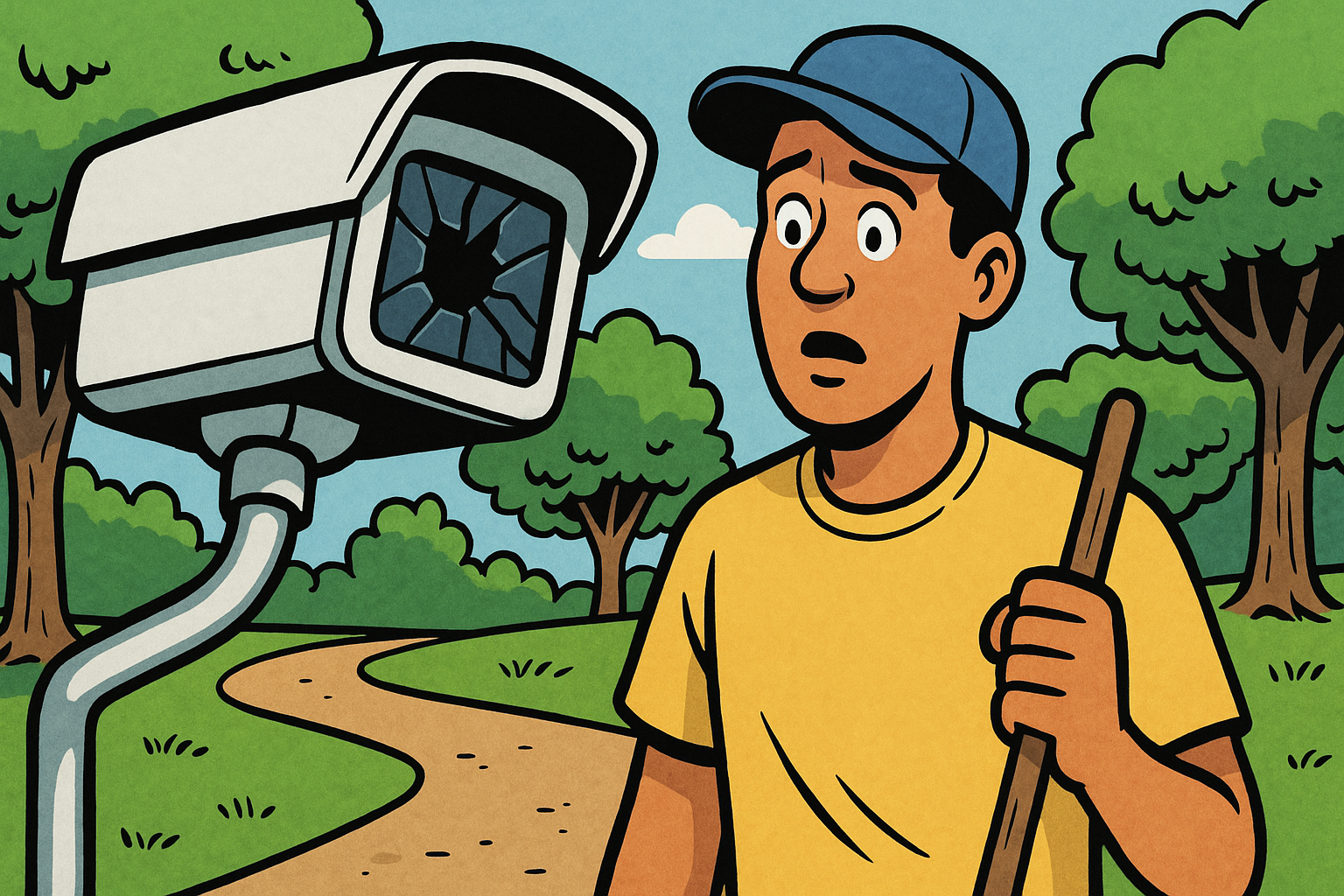“He who fights with monsters should look to it that he himself does not become a monster. And if you gaze long into an abyss, the abyss also gazes into you.” Friedrich Nietzsche’s admonition reverberates with uncanny pertinence these days in Chesterburgh, where an ostensibly benign initiative to install surveillance cameras in all public parks threatens to become a quagmire of ethical obfuscation and civic disempowerment. It is with a mixture of profound concern and a scholar’s dispassionate inquiry that I report on this unfolding chapter in our town’s civic life, which demands from us not only vigilance but also a reckoning with the very principles of transparency, privacy, and communal trust.
At first glance, the Chesterburgh Parks Surveillance Project (CPSP) seems a logical stride toward enhanced safety. Town council minutes reveal unambiguous intentions: “To deter vandalism, expedite law enforcement responses, and increase general park patron safety.” Yet, a closer exegesis of the matter uncovers a labyrinth of contradictions. As one peruses the official documents, it becomes evident that the ubiquity of cameras—proposed for every nook, from the bucolic expanse of Riverbend Park to the neighborhood enclave of Millhill Commons—raises pressing questions far beyond crime statistics and municipal expenditure.
The first, and perhaps most glaring, quandary is the erosion of the ‘public’ in public spaces. Parks have long functioned as democratic commons, spaces where surveillance is minimal and the interventions of state power palpably restrained. In situating Chesterburgh’s outdoor arenas under relentless electronic scrutiny, do we not risk transmuting zones of civic leisure into loci of suspicion? The implicit message—a tacit presumption of guilt—posits every visitor as a potential malefactor. This surveillance panopticon, while purportedly benign, may engender not protection but self-censorship, corroding the spontaneous expressions of community life that render our parks vibrant.
Moreover, the technical specifics of the surveillance infrastructure reveal unsettling gaps in accountability. According to the procurement documents, the town has engaged a third-party contractor, OmniSight Technologies, whose software solutions include not only real-time video feeds but also advanced facial recognition capabilities. The latter introduces a Pandora’s box of privacy violations and algorithmic bias, particularly grave in a town like Chesterburgh with its heterogeneous demographic fabric. Who controls this data? How long is footage retained? What privacy safeguards are codified? These questions linger, inadequately addressed in public forums, obfuscated beneath layers of bureaucratic jargon.
Equally disquieting is the conspicuous absence of community consultation in these deliberations. The town held a solitary public meeting, sparsely attended and predictably dominated by voices advocating for greater security. Yet, such a pivotal policy decision warrants an iterative, inclusive dialogue with stakeholders not only concerned with safety but also with civil liberties. It is especially imperative to consider the perspectives of vulnerable populations—the disabled, racial minorities, and children—for whom constant surveillance can intensify marginalization and exacerbate feelings of vulnerability rather than ameliorate them.
Chesterburgh’s school board, a locus I have observed with enduring scrutiny, provides an instructive cautionary parallel. Recent controversies surrounding surveillance in school hallways—framed as anti-bullying measures—revealed how technology, unchecked and poorly regulated, can metamorphose into instruments of control and alienation rather than safety. The parallels to the parks initiative are stark and should counsel prudence. A community shaped by respectful dialogue, transparent governance, and ethical foresight must resist the facile allure of omnipresent observation that sacrifices freedom at the altar of security.
Yet, it would be folly to dismiss concerns about safety as mere paranoia or reactionary resistance to technology. Chesterburgh’s parks have indeed endured bouts of vandalism and ill behavior—spray paint scars, nocturnal trespassers, and occasional petty theft disrupt the idyllic ethos we cherish. The quest for order is neither novel nor unreasonable. However, the measures enacted must be proportional, justifiable, and embedded within a framework that respects the dialectic tension between security and liberty—not a Faustian bargain that undermines foundational civic virtues.
On a metaphysical plane, this push toward ubiquitous surveillance invites us to ponder the meaning of privacy itself. Is privacy merely a relic to be sacrificed on the altar of modernity? Or does it serve as the sine qua non of human dignity and autonomy? An ecosystem of eyes, constant and unblinking, threatens to externalize the internal sanctum of the self, transforming behavior under the weight of observed expectation. Chesterburgh’s citizens must ask themselves: does the 21st century park reflect our collective aspirations or our dystopian capitulations?
Practically speaking, our town council must now engage with these multi-layered concerns with urgency and humility. Procedural transparency mandates not only the publication of detailed use policies, data governance protocols, and hardware maintenance records but also the establishment of an independent civilian oversight committee endowed with genuine influence. Only through such radical accountability can the abstraction of “public safety” be reconciled with the lived realities of Chesterburgh’s heterogeneous citizenry.
Moreover, educational outreach is paramount. Residents require clear, accessible elucidations of what surveillance entails, how their data might be processed, and avenues for redress should violations occur. The fissures of mistrust that establish in the absence of such transparency may prove far more corrosive than any antisocial behavior lurking in the underbrush of our parks.
To conclude, the unfolding surveillance saga stands as a microcosm of a broader societal crisis—one in which technological capability outpaces ethical consensus, and where the seductions of security threaten to eclipse the essential liberties that constitute a free polity. In the words of Virginia Woolf, “The future is dark, which is on the whole, the best thing the future can be, I think.” However, it need not be opaque to deliberation, nor foreclosed to principled dissent. Chesterburgh must seize this moment not to succumb blindly to the abyss of surveillance, but rather to scrutinize it with the rigorous, skeptical intellect that once guided its now-retired philosophy professor turned humbled reporter. Our parks, our town, and indeed our very civic soul depend upon it.
Assigned Reading:
- Michel Foucault, Discipline and Punish: The Birth of the Prison (1975)
- Shoshana Zuboff, The Age of Surveillance Capitalism (2019)

